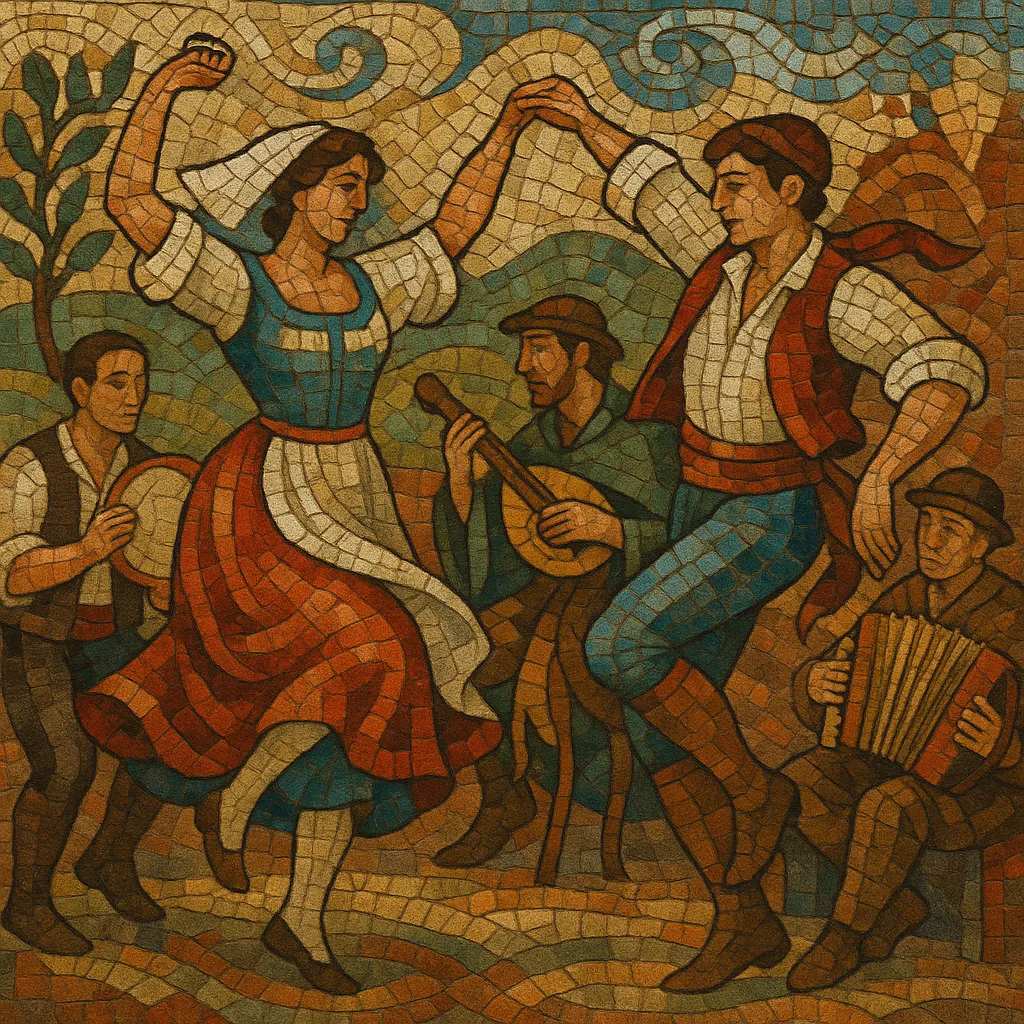Tarantella is a family of fast, swirling Southern Italian folk dances and musical styles, typically in compound meters such as 6/8 or 12/8. It is most closely associated with regions like Apulia (Puglia), Campania, Basilicata, Calabria, and Sicily.
Historically linked to the folk healing/possession ritual of tarantism, tarantella music drives dancers with a propulsive tambourine (tamburello) groove, ringing mandolins or chitarra battente, accordion, violin, zampogna (bagpipe), and reed pipes (ciaramella). Melodies often favor minor modes (Aeolian or Dorian), repetitive ostinati, and call-and-response vocals, creating an ecstatic, trance-like momentum.
Across Italy, regional variants include the Salentine pizzica, the Calabrian tarantella, and Campania’s tammurriata (closely related), each with distinct steps, rhythmic accents, and instrumentation but sharing a kinetic, communal, and celebratory character.
Tarantella emerged in Southern Italy during the 1600s, with early written references from Naples and surrounding areas. Its name and lore are tied to tarantism—the belief that frenzied dancing, driven by specific rhythms and timbres, could cure the bite of the tarantula (or, more symbolically, psychosomatic and social ailments). While the medical basis is folkloric, the music’s ecstatic pulse and cyclic structures clearly served cathartic, communal functions.
Through the 1700s and 1800s, tarantella spread as a secular social dance and as regional variants: pizzica in Salento (Apulia), tarantella calabrese in Calabria, and tammurriata around Naples. Its infectious 6/8–12/8 drive attracted European art-music composers, who stylized the form for salon, ballet, and opera, preserving its quick compound meter, hemiolas, and vivacious character.
Industrialization, urban migration, and changing tastes led to a decline in rural ritual contexts. Yet the dance persisted at weddings, festivals, and community gatherings, often accompanied by accordion, guitar, and tamburello. Folklorists and regional ensembles began documenting and arranging variants, seeding modern stage presentations.
From the 1970s onward, folk revivals and research into tarantism inspired new ensembles and large-scale festivals (notably La Notte della Taranta in Salento). Contemporary groups recombine traditional instruments with modern production, expanding tarantella’s reach while keeping the core rhythmic engine and communal dance energy intact.


